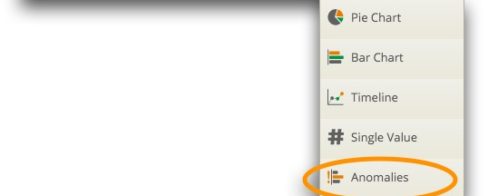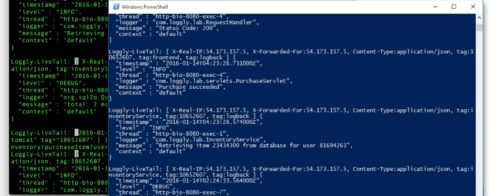Loggly Introduces Live Tail, Anomaly Detection and Derived Fields Custom Parsing Features
SAN FRANCISCO, Oct. 7, 2015 /PRNewswire/ — Loggly, the leading cloud-based, enterprise-class log management solution provider, today announced the addition of three key features: Live Tail, Anomaly Detection and Derived Fields Custom Parsing.
“We’re excited to be introducing these new capabilities to Loggly customers, specifically our most requested feature, Live Tail,” said Sven Dummer, Senior Director of Product Marketing at Loggly. “Loggly Live Tail is unique because it allows users to view a real-time stream of logs from all hosts in a single command line window, simplifying and greatly decreasing the time to analyze code and deployment changes.”
Live Tail
Loggly Live Tail is like the classic UNIX “tail” command on steroids – it allows users to not only monitor changes of multiple log sources at once, but also provides filtering, highlighting in real-time and pipes the stream through any other command line utilities. Live Tail enables teams to avoid granting access privileges to individual hosts in order to tail logs. No other solution provides a real-time consolidated stream nor the command line access that’s familiar to engineers for this purpose. For more information about Loggly’s Live Tail feature, click here.
Anomaly Detection
Loggly’s Anomaly Detection allows you to find significant changes in event frequency. Significant increases or decreases in the frequency of specific event types often indicates new problems that require attention, or they can confirm that you fixed a pre-existing problem. This feature proactively monitors your system and speeds troubleshooting by finding these anomalies through identification of significant changes by field value, making analysis easier and more cost-effective. Competitors offer different types of anomaly detection, but none offer the ability to quickly and simply identify significant changes by field value. For more information about Loggly’s anomaly detection, click here.
Derived Fields Custom Parsing
While Loggly has always offered automatic parsing of a wide variety of standard log types, Loggly derived fields now provides a rich set of easy-to-use rule types to parse any kind of custom log data, usually without the need to write regular expressions. The latest addition to derived field rule types allows for automated parsing of key-value pairs. Derived field rules allow users to add structure to logs, allowing them to be cataloged and navigated using Loggly Dynamic Field Explorer™, providing a simple, one-click analysis. Loggly offers the richest range of options so that you can choose the simplest option for the parsing task. For more information about Loggly’s derived fields custom parsing feature, click here.
Feature Availability
Anomaly Detection is currently an invitation-only feature and Loggly’s Derived Fields Custom Parsing feature is available for all Loggly users. A beta preview of the command line interface (CLI) version of Live Tail will be demoed at AWS re:Invent at Loggly’s booth (#929). GA release is scheduled for the end of October 2015.
About Loggly:
Loggly aims to empower the creators and operators of cloud-based services to operate flawlessly and deliver great user experiences by knowing what’s going on with their applications and why. Our cloud-based log management solution shows you what matters by crunching through huge volumes of log data that no human could possibly read. Loggly is the world’s most popular cloud-based, enterprise-class log management solution, used by more than 5,000 happy customers. Founded in 2009 and based in San Francisco, the company is backed by Harmony Partners, Trinity Ventures, True Ventures, Matrix Partners, Cisco, Data Collective Venture Capital, and others. Visit us at www-staging.loggly.com or follow @loggly on Twitter.
Press Contact:
Matt Trocchio
SHIFT Communications
512.792.2555
loggly@shiftcomm.com
The Loggly and SolarWinds trademarks, service marks, and logos are the exclusive property of SolarWinds Worldwide, LLC or its affiliates. All other trademarks are the property of their respective owners.
Hoover J. Beaver


